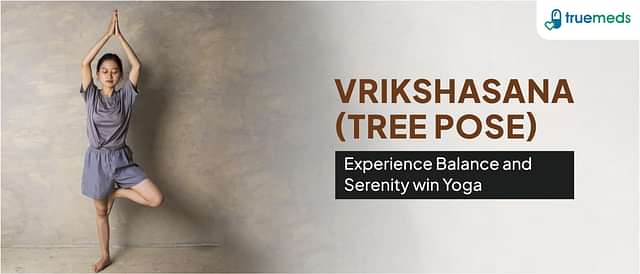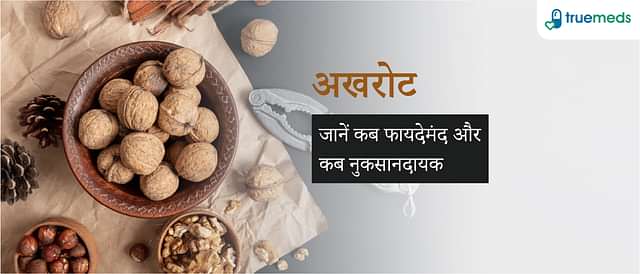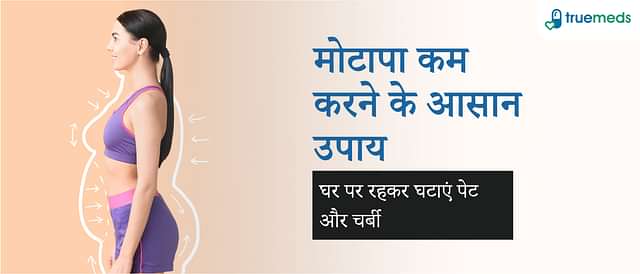Benefits Of Sukhasana (Easy Pose) And How To Do It
Last updated on : 18 Mar, 2025
Read time : 11 min
Yoga is an ancient practice that integrates mind, body, and spirit to enhance overall well-being. Asanas, or yoga poses, form a significant part of this holistic practice. These asanas often mimic nature and are designed to bring harmony and balance to the physical and mental aspects of our being. One such serene and easy-to-perform asana is Sukhasana or Easy Pose.
What is Sukhasana or Easy Pose?
Sukhasana, also called the Easy Pose, is a quintessential seated pose in yoga. This beginner-friendly asana entails crossing and interlacing your legs, maintaining an upright spine, aligning the shoulders precisely over the glutes, and evenly distributing your body weight over your sitting bones.
This pose is highly beneficial for those who spend extended periods sitting in a chair as the Sukhasana practice helps release tension from the lower body and enhances posture. Derived from Sanskrit, Sukhasana means ‘refreshing exercise,’ symbolising inner fulfilment and leisure. It is a standard sitting posture in Eastern culture and can be performed even without having an empty stomach. However, practising it in the morning might be more beneficial as it aids in deep meditative and pranayama practices.
Sukhasana is more than just a simple sitting position; it’s a launchpad for a journey towards improved concentration, better posture, and heightened self-awareness. Let’s explore the wondrous benefits of Sukhasana and its procedure in the following sections.
Sukhasana is versatile and can be practised by people of all ages, allowing everyone to reap its benefits.
How to Perform Sukhasana?
Sukhasana, also known as the Easy Pose, is a common seated position in yoga. Here’s a simple procedure to perform Sukhasana:
- Sit on the floor with your legs stretched out in front of you in Dandasana (Staff Pose).
- Bend your left leg and place your left foot under your right thigh.
- Bend your right leg and place your right foot under your left thigh.
- Adjust your legs and pelvis to find a comfortable seated position.
- Sit tall with an engaged core and relaxed shoulders. Keep your neck, head, and spine aligned.
- Place your hands on your knees or thighs with palms facing down or up.
- Close your eyes gently and take slow, deep breaths.
- Focus, concentrate, and remain in the posture for a few minutes.
The serene calming nature of this pose makes it ideal for meditation and breathing exercises.
Sukhasana stands as a testament to yoga’s brilliance, offering numerous physical and mental benefits while being easy to practice for beginners. It’s an excellent starting point for those new to yoga and can be integrated into daily routines for improved health and mindfulness.
Read More – Morning Yoga Poses
What are the 15 Health Benefits of Sukhasana?
Sukhasana is more than just a comfortable seating position. Its regular practice can offer several health benefits:
- Calms the mind and reduces stress and anxiety: The relaxed posture and focused breathing in Sukhasana help in promoting mental clarity.
- Improves posture: It helps align the spine properly, thus strengthening back and shoulder muscles.
- Alleviates stiffness: Sukhasana stretches the spine, reducing tension and stiffness.
- Aids digestion: It improves blood flow to abdominal organs, aiding digestion.
- Increases flexibility: This pose stretches the ankles and knees, thereby reducing the risk of injury.
- Promotes healthy blood circulation: The steady breathing pattern aids in healthy blood flow throughout the body.
- Increases focus and concentration: The calmness induced by Sukhasana improves cognitive functions like focus and attention.
- Improves lung function: Regular practice of this pose can enhance lung capacity.
- Provides potential relief for chronic lower back pain: It strengthens the back muscles and improves posture, thereby decreasing lower back pain.
- Assists in managing heart disease and cholesterol: Relaxation and stress reduction from this pose can contribute to a healthier heart.
- Helps with weight management: Regular practice aids in better metabolism and digestion, supporting weight management.
- Enhances your posture: Sukhasana increases awareness of body posture alignment. It promotes proper spine alignment while strengthening the back and shoulder muscles.
- Helps in emotional stability: Deep focus during the pose helps in emotional stability and builds resilience against stressors.
- Activates the parasympathetic nervous system: This pose promotes relaxation and reduces the body’s stress response.
- Fosters spiritual growth: For many practitioners, Sukhasana serves as a gateway to deeper spiritual exploration and connection.
What Are the Other Benefits of Sukhasana?
Apart from these health benefits, other advantages of practising Sukhasana regularly include:
- Increased self-awareness: Sukhasana encourages self-reflection and mindfulness, leading to increased self-awareness.
- Improved balance and coordination: Practising Sukhasana regularly can improve balance and coordination.
- Improved overall well-being: The calming effect of Sukhasana has a positive impact on general well-being and can foster a sense of purpose and fulfilment.
3 Breathing Techniques to Enhance Your Sukhasana
Incorporating certain breathing techniques while practising Sukhasana can deepen your relaxation and enhance the overall experience. Some of these techniques are:
- Deep Breathing: Sit comfortably in Sukhasana, close your eyes, and take slow, deep breaths. Inhale through the nose, allowing your abdomen to expand, and exhale through the nose, letting your abdomen fall. This technique promotes relaxation, reduces stress, and increases oxygen flow in the body.
- Alternate Nostril Breathing (Nadi Shodhana): Use your right thumb to close your right nostril, inhale deeply through the left nostril. Close the left nostril with your ring finger, release the right nostril, and exhale. This balances the body’s energy, calms the nervous system, and promotes mental clarity.
- Counted Breathing: Inhale for a count of four, hold the breath for a count of four, exhale for a count of four, and hold again for a count of four. Counted breathing helps regulate breath, calms the mind, and reduces anxiety.
By incorporating these breathing techniques into your Sukhasana practice, you can significantly enhance the overall experience, promoting relaxation, focus, and inner peace.
The Mudras of Sukhasana
Practising Sukhasana can be augmented by incorporating mudras or hand gestures that channel the body’s energy flow for enhanced holistic benefits. Here are some typically used mudras:
- Gyan Mudra: Lightly touch the tip of the thumb to the tip of the index finger, keeping the other fingers straight and relaxed. This mudra promotes mental clarity, concentration, and calmness. It stimulates your brain, enhances memory, and alleviates stress and anxiety.
- Anjali Mudra: Bring your palms together at the centre of your chest (heart), with your fingers pointing upwards. This mudra encourages a sense of calmness and focus, making it an ideal gesture for meditation.
- Apana Mudra: Join the tips of your thumb, middle finger, and ring finger while keeping the other fingers extended. This mudra aids in detoxification and digestion, promotes waste elimination, and helps relieve constipation.
- Shuni Mudra: Touch the tip of your middle finger to the tip of your thumb while extending the other fingers. This mudra enhances patience and discipline, promoting a calm and focused mind.
- Prana Mudra: Connect the tips of your thumb, ring finger, and little finger while keeping the other fingers extended. Prana mudra increases vitality and energy levels, enhancing overall well-being.
Are There Any Precautions for Sukhasana?
While Sukhasana is mostly safe for all practitioners, certain precautions should be observed:
- Avoid if Injured: If you have hip, knee or spine injuries, it’s best to avoid this pose or consult your doctor before attempting it.
- Use Support: For beginners or those with back discomfort, sitting on a cushion or yoga block to elevate the hips can provide added comfort.
- Listen to Your Body: If you experience any discomfort or pain, make adjustments or come out of the pose altogether.
- Practise in a Quiet Environment: To enhance focus and meditation, you should practise Sukhasana in a calm and quiet space.
- Change Position of Your Legs: Make sure to alternate the crossing of your legs during practice as this helps prevent stiffness and promotes flexibility.
Avoid these 5 Mistakes to Get the Best Out of Sukhasana
- Poor Posture: Ensure that your back is straight, shoulders relaxed, and head aligned with the spine instead of slouching or leaning back.
- Incorrect Leg Position: Make sure your feet are tucked under the opposite thighs and your knees are close to the ground to promote stability.
- Being Tense: Focus on releasing tension in areas such as the shoulders, neck, or face to allow your body to fully relax into the pose.
- Ignoring Your Breathing: Remember to breathe deeply and maintain an even rhythm as this enhances relaxation and focus.
- Practising on an Uncomfortable Surface: Sitting on a hard or uneven surface can cause discomfort. Use a cushion or yoga block for support.
By being mindful of these common mistakes, you can enhance your experience and fully enjoy the benefits of Sukhasana.
What are the Risks of the Exercise?
Sukhasana has numerous benefits. However, like with any other form of exercise, it is important to understand and consider the potential risks before practising Sukhasana:
- Joint Strain: If you force your legs into position or align them improperly, you might strain your knees, hips, or ankles. This risk is higher for individuals who already have joint issues.
- Back Pain: If one sits in Sukhasana for extended periods without proper spinal alignment, it might exacerbate back pain. Those with existing back problems should be cautious and consider using support props.
- Circulation Issues: Sitting cross-legged for too long can impede blood circulation in the legs, which might result in numbness or discomfort.
- Muscle Tightness: Those with tight hips may find sitting comfortably in Sukhasana challenging, leading to muscle tightness or discomfort.
- Distraction and Anxiety: Practising Sukhasana in noisy or chaotic environments can lead to distractions, which might reduce the pose’s effectiveness and potentially increase anxiety.
To reduce these risks, it’s essential to listen to your body’s signals, use props if necessary, and practice in a peaceful environment.
Sukhasana is an accessible yoga pose that has multiple benefits – from enhancing your overall well-being by promoting relaxation and mindfulness to improving your posture. Including Sukhasana in your routine can help cultivate a calm mind. But remember to be conscious of your body’s limits and make necessary adjustments to ensure a safe and rewarding practice. Ensuring you’re informed about the potential risks and taking necessary precautions can help make your Sukhasana practice a safe and rewarding experience. Happy Yoga!
Choose the Right Clothes for Sukhasana: 5 Things to Keep In Mind
As you prepare to experience the benefits of Sukhasana, choosing the right attire can significantly influence your comfort level during the exercise.
- Comfortable Fit: Opt for loose-fitting clothing which allows easy movement and doesn’t restrict your ability to sit comfortably in the Sukhasana pose.
- Breathable Fabrics: Cotton or moisture-wicking fabrics can help regulate your body temperature and keep you comforted during your yoga practice.
- Stretchable Material: Clothes with some stretch, like yoga pants or leggings, are advisable as they accommodate various movements and postures.
- Layering Options: If you’re practising in a cooler environment, consider wearing layers. A light long-sleeve top or shawl can provide the warmth needed during meditation.
- Avoid Accessories: Any jewellery or accessories that might be uncomfortable while sitting cross-legged in Sukhasana should be removed to avoid distractions.
By dressing appropriately and being mindful of potential risks, your Sukhasana practice will be more enjoyable and beneficial.
Frequently Asked Questions (FAQs)
Practising Sukhasana for 5-10 minutes daily can harness the maximum benefits of Sukhasana, including stress and anxiety alleviation.
Yes, but it’s advisable to wait for at least 30 minutes after performing Sukhasana before eating to allow the body to settle.
People with severe knee or hip injuries should avoid Sukhasana. Always consult your doctor before beginning any new yoga regime.
Absolutely! Sukhasana, also known as Easy Pose, is ideal for beginners due to its simplicity and numerous easy pose benefits.
Certainly, one of the key benefits of Sukhasana is its ability to induce tranquillity, reducing stress and anxiety levels effectively.
Sukhasana can be safely practised during pregnancy, but always with your doctor’s approval and under expert supervision. Take the necessary precautions and stay safe and healthy!
Disclaimer
Our healthcare experts have carefully reviewed and compiled the information presented here to ensure accuracy and trustworthiness. It is important to note that this information serves as a general overview of the topic and is for informational purposes only. It is not intended to diagnose, prevent, or cure any health problem. This page does not establish a doctor-patient relationship, nor does it replace the advice or consultation of a registered medical practitioner. We recommend seeking guidance from your registered medical practitioner for any questions or concerns regarding your medical condition.
Popular Articles
Recommended Articles
Recent Articles
Top-Selling Medicines:
...View more
Top-Selling OTC:
...View more
Company
About UsHealth ArticleHealth StoriesDiseases & Health ConditionsAll MedicinesAll BrandsNeed HelpFAQSubscribe
Registered Office Address
Grievance Officer
Download Truemeds

Contact Us
Our customer representative team is available 7 days a week from 9 am - 9 pm.
v3.7.6
Our Payment Partners



























































